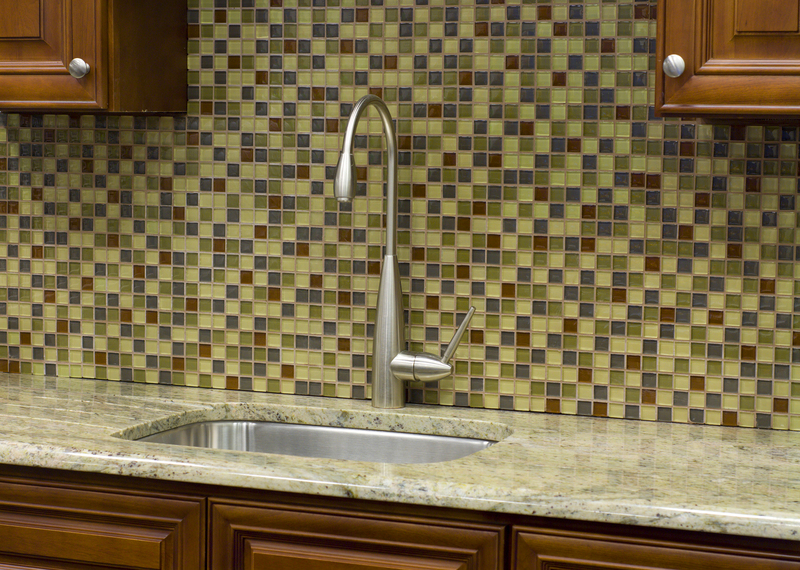Effective Mould Removal Techniques for Window Sills
Posted on 02/10/2025
Effective Mould Removal Techniques for Window Sills
Mould growth on window sills is a common yet serious issue that many homeowners face. Left untreated, it can damage wood, stain surfaces, and even present health risks due to the release of airborne spores. Fortunately, there are many effective mould removal techniques for window sills that can restore your windows to their best condition.
In this comprehensive guide, you'll find step-by-step instructions, expert tips, and answers to the most common questions about eliminating unwanted mold from your window areas. Whether you're dealing with surface-level window mould or tackling a recurring issue, this article provides proven removal methods and preventative strategies.
Understanding Mould on Window Sills
The first step in fighting mold is understanding what causes it. Mould, or mildew, thrives in damp, poorly ventilated environments. Window sills are especially susceptible because condensation often collects on windows, providing ideal conditions for fungus growth.
- Humidity: Rooms with high humidity, such as bathrooms and kitchens, increase the chances of mold formation.
- Poor Ventilation: Restricted airflow encourages condensation and a damp environment.
- Organic Materials: Wooden window sills, dust, and debris serve as nutrients for mould.
- Leaking Windows: Ineffective sealing or old caulking lets water seep in, creating moisture pockets.
Recognizing the underlying causes is just as important as knowing how to clean and remove mould from window sills.

Identifying Mould on Your Window Sills
Not every stain on your windowsill is mold, but common signs include:
- Black, green, or grey patches on the surface
- Musty, damp odour near the window
- Peeling paint or soft wood
- Worsening allergies for occupants
If you notice any of these issues, take action quickly to prevent further spread.
Preparation: Safety First Before Removing Mould
Mould spores can cause allergic reactions or respiratory issues. Before removal, ensure you have the following:
- Protective gloves (rubber or latex)
- Mask (N95 respirator is best)
- Safety goggles to avoid eye irritation
- Old clothing or coveralls
- Ventilation--open nearby windows or use fans
Never attempt removal without adequate protection. For large infestations, professional mould remediation may be required.
The Most Effective Window Sill Mould Removal Techniques
There are several tried-and-true methods for removing mould from window sills. Below, you'll find a range of natural, chemical, and professional options for various surfaces and scenarios.
1. Basic Soap and Water Solution
For light, recent mould patches:
- Mix warm water with dishwashing soap.
- Dampen a cloth or soft-bristled brush in the soapy water.
- Gently scrub the affected area, being careful not to damage paint or wood grain.
- Rinse and dry thoroughly.
Tip: Soap and water can suffice for minor mildew and regular cleaning before the issue worsens.
2. White Vinegar Treatment
White vinegar is an excellent natural mould remover. Its mild acidity kills many types of window mould and is safe for most surfaces.
- Pour undiluted white vinegar into a spray bottle.
- Spray directly onto mouldy spots and leave for at least 1 hour.
- Wipe clean with a microfiber cloth.
- If necessary, repeat the process.
Note: Vinegar may smell strong, but the odour dissipates as it dries, leaving your window sills clean and fresh.
3. Baking Soda Paste
Baking soda is another gentle, non-toxic solution for effective window sill mould removal.
- Mix one part baking soda with enough water to create a paste.
- Apply the paste to the mouldy section and gently scrub using a soft brush.
- Let it sit for 10-15 minutes.
- Rinse and wipe dry.
Baking soda not only removes mold, but also deodorizes and prevents future growth.
4. Hydrogen Peroxide Solution
For tougher or more stubborn mould, hydrogen peroxide (3% solution) can be effective, especially on porous surfaces like wood.
- Pour hydrogen peroxide into a spray bottle.
- Spray liberally over visible mould patches.
- Allow to bubble for 15-30 minutes.
- Scrub gently, then wipe clean with a damp cloth.
Hydrogen peroxide disinfects and is less harsh than chlorine bleach.
5. Commercial Anti-Mould Cleaners
If DIY solutions are ineffective, there are many commercial mould-removal products specifically designed for windows and sills.
- Follow label instructions.
- Ensure adequate ventilation.
- Wear gloves and a mask, as these products may contain strong chemicals.
Look for products containing fungicides that can prevent regrowth as well as remove stains.
6. Chlorine Bleach (Last Resort)
Bleach should only be used on non-porous surfaces (like vinyl or metal sills). It is harsh and can discolor or damage painted or wooden surfaces. However, for persistent, visible black mildew or mold, it's a potent option.
- Mix one part bleach with three parts water in a bucket.
- With gloved hands, apply the solution using a sponge or cloth.
- Allow it to sit for 10-15 minutes.
- Rinse well and dry thoroughly.
Warning: Never mix bleach with other cleaners, especially ammonia, as it can produce toxic fumes.
Tips for Cleaning Wooden Window Sills with Mould
Wood is more vulnerable to damage from moisture and harsh chemicals.
- Avoid oversaturating with liquid. Use a lightly dampened cloth.
- Always test any cleaning solution on a hidden area first.
- After cleaning, ensure wood is completely dry to prevent warping or decay.
- If mold penetrates deeply, sanding and refinishing may be required.
For painted window sills, stick to milder solutions and avoid abrasives that can scratch or strip paint.
Best Practices: Preventing Future Mould on Window Sills
After you've successfully performed mould removal on your window sills, it's important to make sure the problem doesn't recur. Maintenance and prevention are key in keeping your window areas mould-free.
- Improve ventilation. Open windows daily or use extractor fans in kitchens and bathrooms.
- Reduce humidity by using a dehumidifier in problem areas.
- Fix window leaks quickly. Reseal caulking around sills and frames if needed.
- Wipe condensation from windows every morning during colder months.
- Clean window sills regularly to remove dust, debris, and excess moisture.
- Consider anti-mould paints or sealants for chronic problem areas.
Remember, consistent preventive measures are the best long-term solution for stopping window sill mould growth in its tracks.
Frequently Asked Questions About Window Sill Mould
What causes mould to keep returning to my window sills?
Persistent moisture or high humidity. If leaks, poor ventilation, or high indoor humidity are not resolved after cleaning, mould is likely to return. Address root causes as outlined above.
Is mould on window sills dangerous?
Small amounts of visible mould on window sills are usually not a serious health risk, but spores can affect those with allergies, asthma, or compromised immune systems. If the problem is widespread or black mold (Stachybotrys) is suspected, consult a professional.
Can I paint over mouldy window sills?
No, painting over active mould is ineffective; the mould will continue to grow underneath paint and reappear. Always clean and fully dry the area before repainting. Use a mould-resistant primer for best results.
Should I hire a professional for window mould removal?
If the mould covers a large area (greater than 1 sqm), keeps returning, or you have health concerns, professional mould remediation is advisable. Professionals use advanced techniques and safety equipment to ensure thorough cleaning and prevention.

Summary: Key Points for Mould Removal from Window Sills
Dealing with mould on window sills doesn't have to be overwhelming. By following the best window mould removal techniques, you can effectively eliminate unsightly stains, protect your family's health, and ensure your home remains clean and comfortable.
- Safety first: Always use gloves, a mask, and goggles when tackling mould.
- Effective methods include: Soap and water, vinegar, baking soda, hydrogen peroxide, commercial cleaners, and in some cases, bleach.
- Identify and address root causes: Improve ventilation, control moisture, and repair leaks.
- Preventative measures are crucial for long-term results.
Your window sills can look new again with the right approach. For persistent or hazardous mould, don't hesitate to seek professional assistance.
Conclusion
Mould removal on window sills is essential for the upkeep of your home and the safety of those living in it. By following these comprehensive, effective removal techniques and prioritizing prevention, you can stop mold at its source and enjoy clean, beautiful windows year-round. Refer back to this guide whenever mould appears, and share these solutions with others facing similar issues!
Keep your home healthy, your family protected, and your window sills mould-free using the best methods outlined in this article.
```



